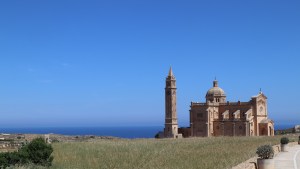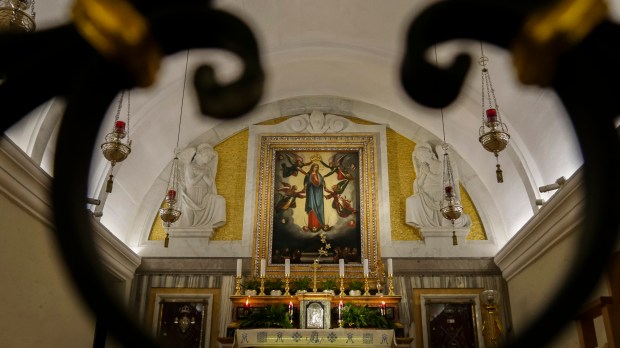Malta, renowned for its picturesque coastline, diving attractions, and vibrant festas, is notably distinguished by its millennial Marian devotion. Rooted in historical events, such as St. Luke’s shipwreck with Paul in the year 60, and nurtured by Byzantine influences during the 5th to 9th centuries, the Maltese archipelago has cultivated a profound Marian tradition. Luke’s Gospel, considered the most Marian, planted the seeds for later Mariological, theological, and devotional developments.
Maltese traditions suggest that Luke may have spoken to the islanders about the Mother of the Savior, contributing to the deep-rooted Marian devotion. The Byzantine occupation also left an indelible mark, as the Christian Orthodox Church and society exhibited intense devotion to the Blessed Virgin. During the First Crusade, Bishop Adhemar noted the prevalence of Marian icons in Byzantine churches and monasteries, suggesting a transfer of Marian devotion to Malta.
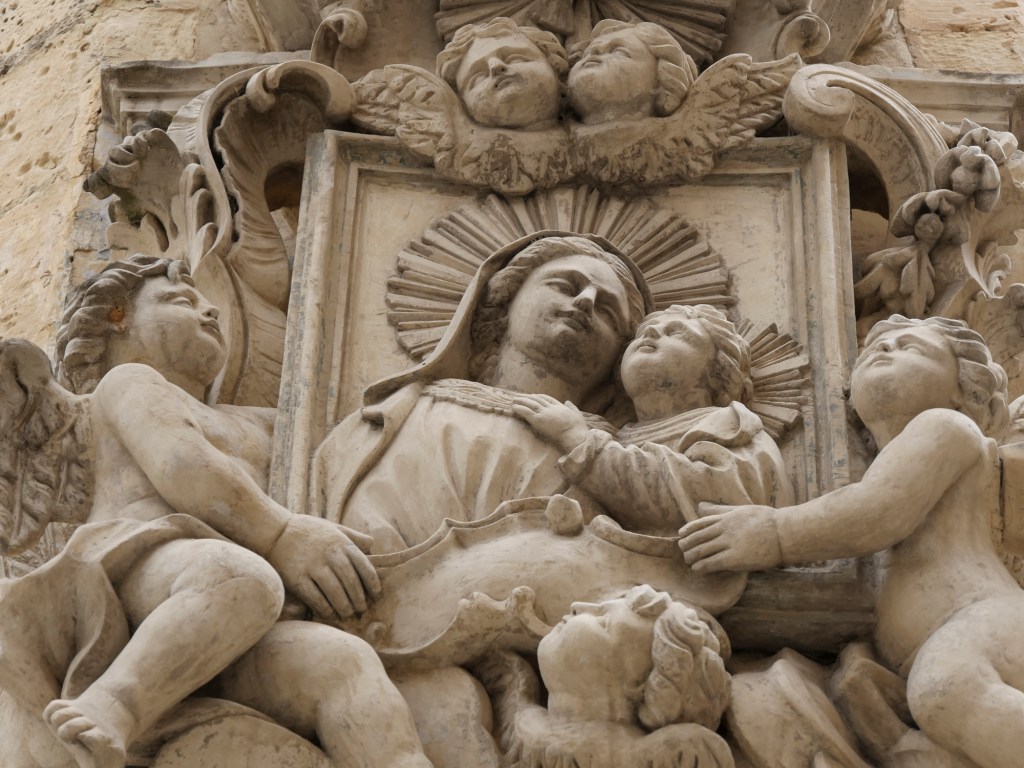
Evidence of this devotion is found in the numerous chapels dotting the Maltese landscape, indicating that Malta has been a center of unequivocal Marian reverence from its inception.With a staggering total of 359 churches, over 200 are dedicated to the Blessed Virgin Mary, making it possible for believers to attend Mass in a different “knisja” (Maltese for church) almost every day throughout the year. Many of these churches serve as Marian sanctuaries, renowned for granting special and miraculous graces to countless individuals over the centuries. Whether due to St. Luke’s historical connection, Byzantine influences, or the enduring devotion of the Maltese people, Malta stands as a testament to a rich and enduring Marian tradition.
The case is that veneration of Mother Mary in Malta dates at least back to the Byzantine era, as is particularly evident in the troglodyte churches at Tas-Silġ, Marsaxlokk. This devotion grew during the late medieval period and has endured, maintaining its strength in the present day. The Melita Mariana Project, a collaborative effort between XirCammini and the Malta Tourism Authority, aims to explore these historical aspects through a 5-day, 100+ km pilgrimage encompassing ancient, old, and recent Marian devotions across Malta and Gozo.
The Assumption, Patroness of the Archipelago
The Assumption holds a distinctive place in the devotional life of Malta, where the Blessed Virgin Mary is revered as Santa Marija Assunta, the patroness of the Islands. Despite the formal declaration of the Assumption as a Dogma of the Catholic Faith in 1950, the devotion to Mary’s Assumption has deep historical roots in both Eastern and Western Christendom, with celebrations occurring on August 15 for centuries.
The origins of the Assumption devotion in Malta are challenging to trace, but by 1575, the island boasted 92 churches and 22 altars dedicated to the Assumption. Over time, approximately 50 churches were lost, while surviving chapels like the Santa Marija Chapel of Kemmuna date back to 1274. The Assumption was once omnipresent in the Maltese archipelago, though many churches fell into neglect or canonical profanation.
Today, the Assumption remains integral to Maltese culture, with nine parishes in Malta and two in Gozo dedicated to Santa Marija Assunta. Noteworthy locations include the Madonna Ta’ Pinu Sanctuary and the Cathedral of Gozo in Victoria. A centuries-old tradition, documented by Gozitan historian De Soldanis in the mid-18th century, reveals how the Gozitans, inspired by the shipwreck of St. Paul in Malta, dedicated their principal Roman pagan temple to the Blessed Virgin. The Assumption, celebrated on August 15 or a proximate date, endures as the central feast in these parishes, symbolizing the profound connection between the Maltese people and their patroness, Santa Marija Assunta.
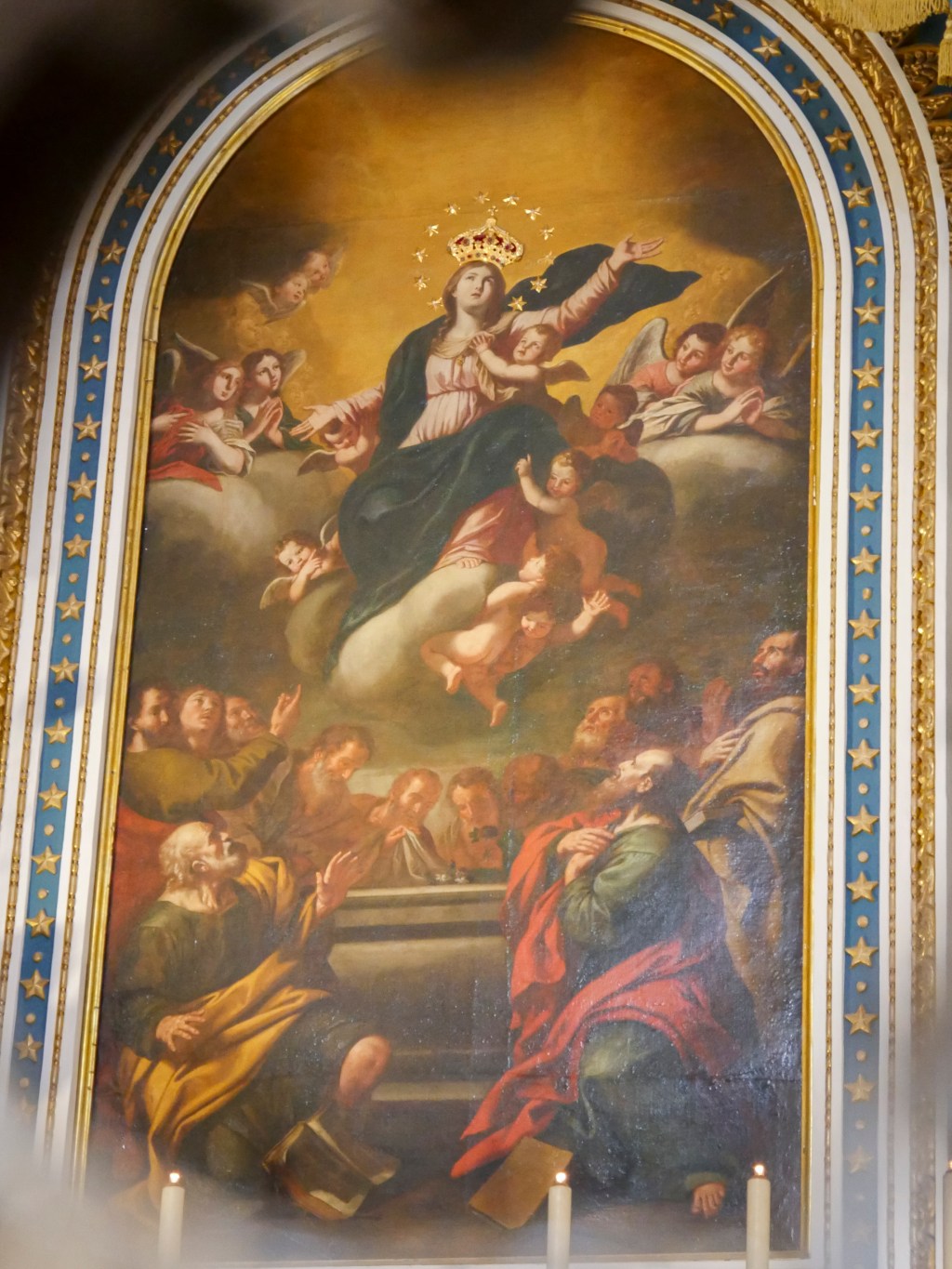
Soon you will be able to embark on a captivating journey with the Melita Mariana Project, a Marian pilgrimage like no other, covering more than 100 kilometers in five days, delving into the rich, ancient religious traditions of Malta and Gozo. The walk will be ready and available for everyone interested in Fall 2024. This enriching pilgrimage traverses the landscapes steeped in centuries of cultural and religious significance, and helps you discover the profound connections to Marian traditions that have shaped the islands, inviting you to witness the spiritual tapestry of Malta and Gozo. Experience the beauty of history unfolding before your eyes and be part of the Melita Mariana Project, where every step is a pilgrimage through time and devotion. Some of the shrines, churches, and chapels covered in this pilgrimage include:
Mater Dei Shrine, Mellieħa
The Mater Dei Shrine in Mellieħa serves as the National Marian Shrine and boasts a unique cave church featuring a late Siculo-Byzantine fresco of the Virgin Mary, the Hodegetria. Tradition dates Christian practice on the site to 409, with a cave consecrated as a church. A recent restoration (2013–2016) revealed the damaged but priceless treasure, including details like the inscription “MAT DEI,” a flower representing the Madonna’s eternal virginity, and halos with symbolic features. The Sanctuary is part of the European Marian Network, recognized by the Maltese Episcopal Conference as the National Shrine for the Archdiocese of Malta. Nearby, the underground crypt of Our Lady of the Grotto, with a white statue of Mary holding Baby Jesus, is associated with miraculous events and attracts pilgrims seeking healing and grace.
Old Mdina Cathedral, Mdina
Mdina, Malta’s ancient capital, founded by Phoenicians in the 8th century B.C., houses the Cathedral for the Archdiocese of Malta. Initially dedicated to the Blessed Virgin Mary, it fell into disrepair during the Arab period after an invasion in 870. The site, linked to St, Paul’s meeting with Roman Governor Publius, contains Roman remains in the crypt. The present Baroque cathedral, built in the late 17th-early 18th centuries, replaced the original damaged by an earthquake in 1693. Notable artworks include the Virgin of St, Luke, an early 13th-century Siculo-Romanesque icon, and Maria Melitæ Patrona by Pietro Gagliardi.
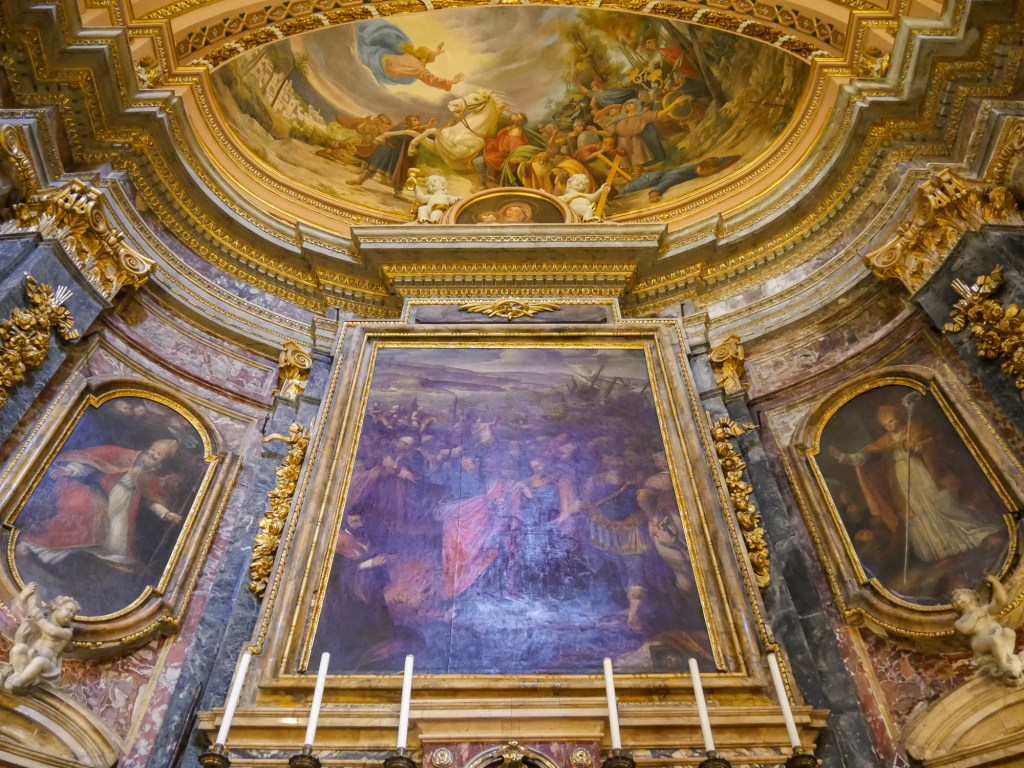
Santa Marija Tal-Virtu
The Santa Marija tal-Virtù site, located on the eastern Rabat plateau, features the Rotunda church dedicated to Our Lady of the Assumption. With archaeological significance, the site contains Phoenician and Romano-Punic tombs, including a paleo-Christian hypogeum, possibly from the 5th or 6th centuries. The Rotunda, erected in 1717, replaced the original church and was modeled after the 1678 Sarria Rotunda. The paleo-Christian crypt beneath it, discovered during 20th-century restoration, has a lobed plan resembling a Latin cross.
Lunzjata (Annunciation) – limits of Rabat and Dingli
In the early 15th century, the Carmelites, led by Fr. Guillelmus Cassar, obtained land in Wied il-Lunzjata (Valley of the Annunciation) near Rabat and Dingli, establishing their first Maltese house. Donated by Donna Margarita de Aragona, the site included an aboveground church dedicated to the Annunciation, likely dating back to the 11th century, evidenced by fused stones. The area, known as Lunzjata, was scenic with freshwater springs. A cave church dedicated to St. Leonard on the same site, initially larger, underwent alterations by the Carmelites. Notable for its preservation, it features rock-cut wall benches reminiscent of paleo-Christian hypogea and nearby cave churches.
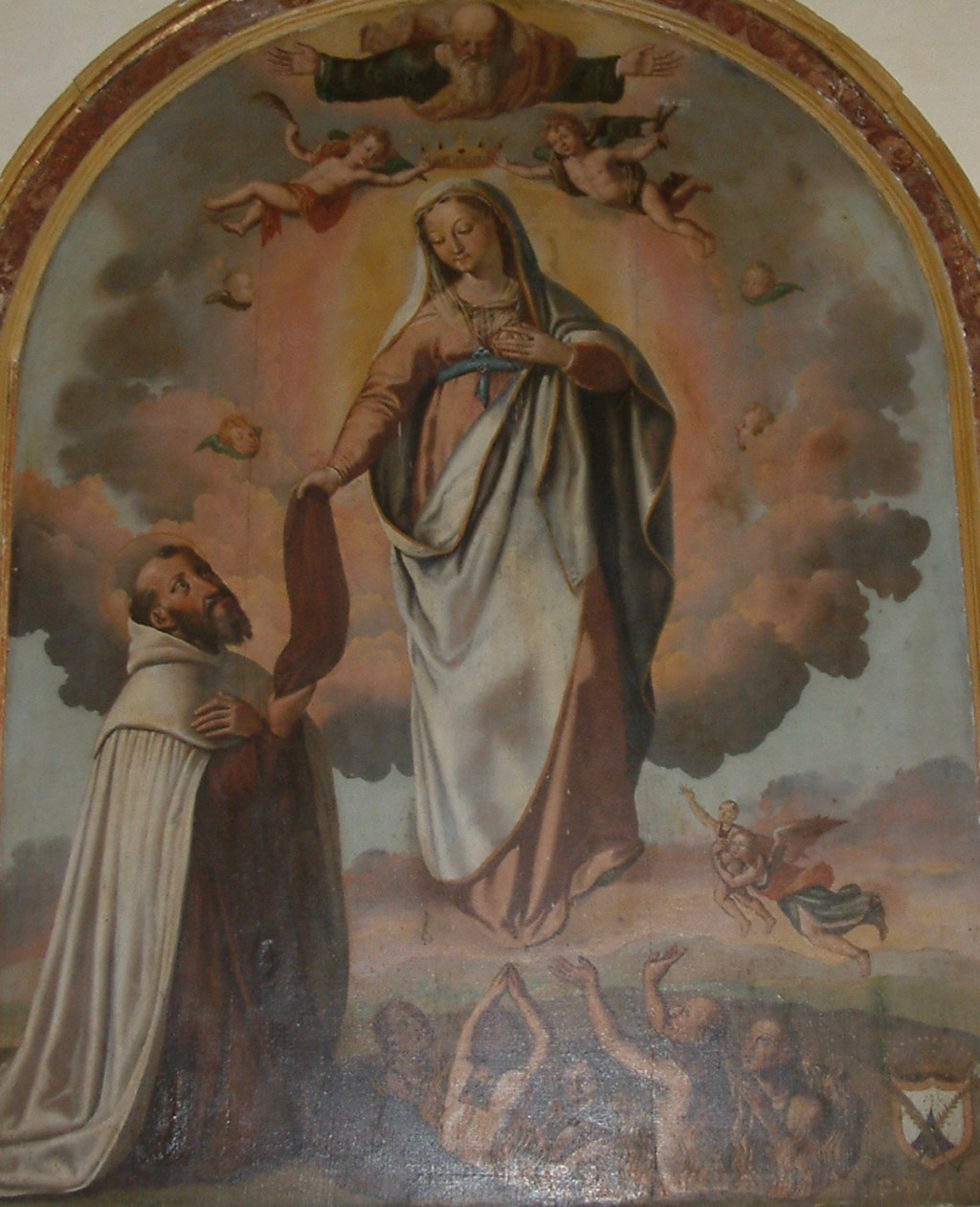
Our Lady of the Grotto of Rabat
Devotion to Our Lady of the Grotto in Malta traces back to 1400 when she appeared to a hunter in a Rabat cave, sparking a pilgrimage influx. Dominican friars established a convent and expanded the church due to the growing number of pilgrims seeking blessings. Throughout history, the Grotto granted numerous graces, from healing a paralytic in 1630 to ending epidemics in 1887 and 1999. Notably, in 2003, a reddish tear on a sculpture led to an investigation by the Vatican, affirming the significance of the age-old devotion. The Curia recommended preserving and strengthening this traditional love for Our Lady.
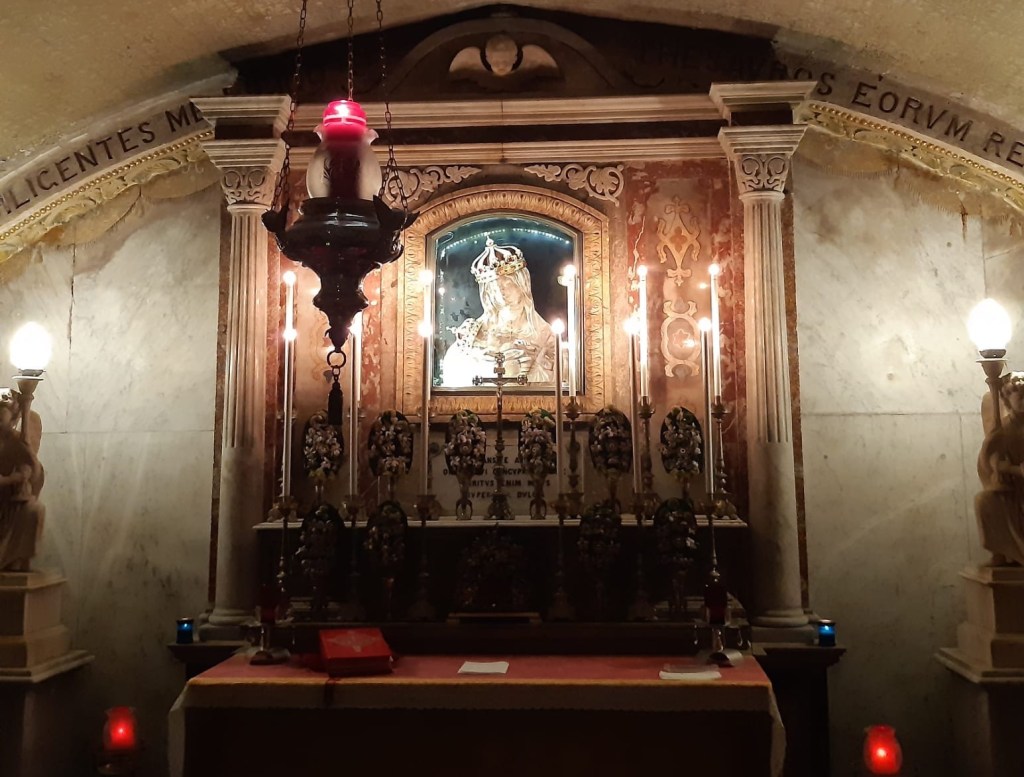
The Church of Our Lady of Victory
The Church of Our Lady of Victory in Valletta, Malta, holds historical significance from the Great Siege of 1565 when the Knights of St. John and the Maltese, against the odds, repelled Ottoman invaders on the feast of the Nativity of the Blessed Virgin Mary. In gratitude, Grand Master Jean Parisot de la Valette built the church in 1567, naming it after Our Lady of Victory. Grand Master Perellos commissioned artist Alessio Erardi to depict scenes of the Virgin Mary’s life on the vaulted ceilings in 1716. The church houses a Byzantine icon of unknown origin, believed to be a gift from Grand Master Wignacourt. Recently restored by Din L-Art Helwa National Trust, the church features a titular painting depicting the Birth of the Blessed Virgin.
Madonna tal-Herba – Birkirkara
In the heart of Birkirkara’s old village stands the renowned Madonna tal-Herba church, a small yet popular shrine in Malta. The name “Herba” possibly commemorates the Ottoman Turks’ flight after the 1565 Great Siege or signifies “ruin” in times of trouble. The titular painting, likely from 1668-1679, depicts the Virgin with Jesus gazing upon souls in Purgatory. The shrine, existing by the 16th century, is a beacon of mercy, with over 500 votive offerings expressing gratitude for received graces. Notably, ex votos depict maritime challenges and women praying for healthy pregnancies. Stories of miraculous healings like a paralytic’s recovery enhanced the shrine’s widespread devotion, attracting visitors from overseas.
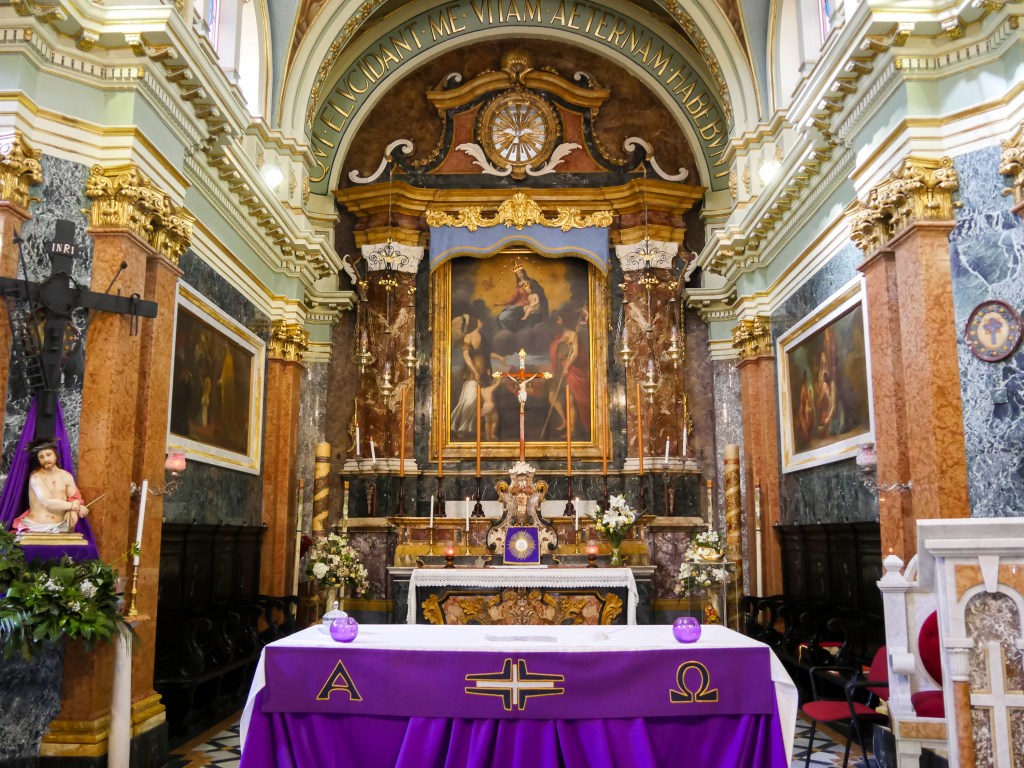
Stella Maris Parish – Sliema
The Stella Maris Parish Church in Sliema, established in 1878, holds historical significance as the region’s oldest parish. Originating from a chapel on Tigné point in 1601, named for the Virgin Mary — Star of the Sea (Stella Maris) — it served as a beacon for local fishermen. The name “Sliema” likely derives from the opening words of the Hail Mary prayer. Initially known as the “Chapel on Dragut’s Point,” the original chapel, closed in 1659, was later rebuilt. The present church, dedicated to Our Lady Stella Maris, was constructed in 1853 and expanded by 1877, ultimately achieving parish status in 1878 and later being honored with the title of “Arċipretali” in 2018. Rich in art and history, it features works such as an apse painting by Giuseppe Calì and the titular statue of Our Lady Stella Maris brought from Paris in 1891. The church stands as an exhibition of paintings depicting the Blessed Virgin’s life.
Sanctuary of Our Lady of Miracles in Lija
The Sanctuary of Our Lady of Miracles in Lija, Malta, dates back to at least the 13th century and has been a focal point of devotion. The current church, built in 1664, replaced the original chapel and holds a triptych Sicilian-style painting by Corso di Buono, now housed in the new church. Grand Master Nicola Cotoner commissioned Mattia Preti to paint the present titular altarpiece, incorporating the Archangel Raphael. A miraculous event in 1743, with human sweat-like drops on the Madonna’s face, coincided with Malta’s earthquake, intensifying devotion. The church, adorned with numerous ex votos, became one of Malta’s most visited sanctuaries.
The Cave Church of Castrum Maris, Vittoriosa
The ancient Castrum Maris (Castle on the Sea) in Birgu, named after St, Angelo, boasts a semi-troglodyte chapel, a testament to Christianity predating the fortification, possibly dating back to paleo-Christian times. The site, initially a temple for Astarte during Phoenician and Carthaginian eras, transitioned to Juno in Roman times. After the legalization of Christianity, temples dedicated to female pagan deities often transformed into Virgin Mary sanctuaries. The Nativity of the Blessed Virgin Mary chapel in Castrum Maris likely originated in the 11th century, possibly as a gesture of gratitude after Roger I’s reconquest of Malta in 1091.
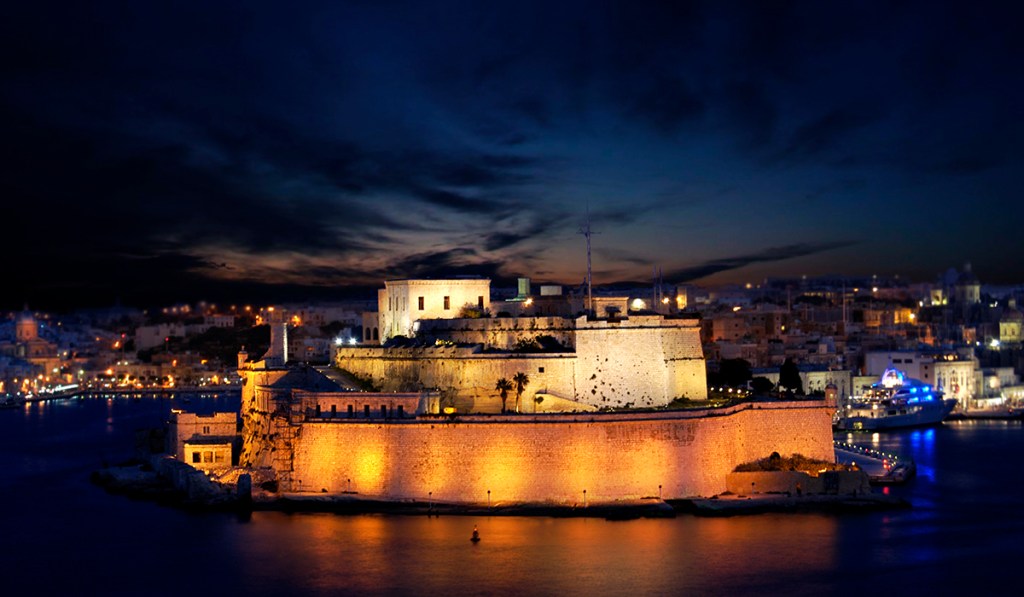
The Assumption of Bir Miftuh – now Gudja
The Church of Bir Miftuħ, dedicated to St. Mary of August, has stood for over 600 years amid an olive grove, opposite Malta International Airport. Initially a parish, it served multiple villages until 1676 when the Gudja parish church was built. The church underwent changes in the 16th century, and its rear section became part of Gudja’s church. A belfry, added in the 16th century, remains without bells, rumored to be buried during the Great Siege of 1565. Restored in 1973 by Din l-Art Helwa, the church reveals a mural depicting the Last Judgment, with tiers showcasing saints, demons, and scenes from Eden. The altar painting from the 16th century depicts God, angels, and the Virgin and Child.
Madonna Ta’ Pinu – Gozo National Marian Shrine
The devotion to Our Lady of Ta’ Pinu dates back to the 15th century, with the chapel’s history intertwined with miraculous events. In 1883, Karmni Grima experienced a divine call and visited the chapel, where she felt rapture and heard a voice instructing her to recite three Hail Marys. The messages spread, leading to the chapel’s transformation into a majestic Basilica. The present shrine, completed in 1931, accommodates the original chapel and houses the miraculous painting of the Assumption. As Pilgrims visit it, leaving votive offerings, the shrine gained recognition from popes like Pius XI, John Paul II, Benedict XVI, and Pope Francis in 2022. The Pilgrim’s Way, inaugurated in 2015, features frescoes along the final kilometer leading to Ta’ Pinu, offering a meditative journey.
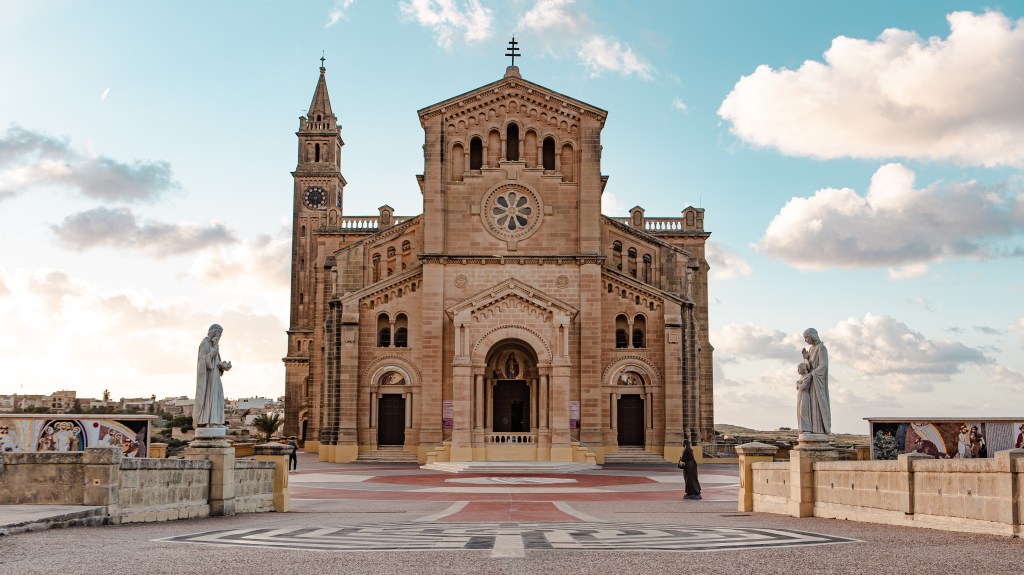
Interested in a pilgrimage?
XirCammini helps individuals or groups walk the Caminos. Contact us on information@XirCammini.org or via WhatsApp on +35679046942. We are a not-for-profit organization dedicated to historical and faith-related walks in Malta and Europe – registered as a Voluntary Organization (VO1646) with the Office of the Commissioner for Voluntary Organizations, Malta.
This content has been brought to you in partnership with the Malta Tourism Authority.
